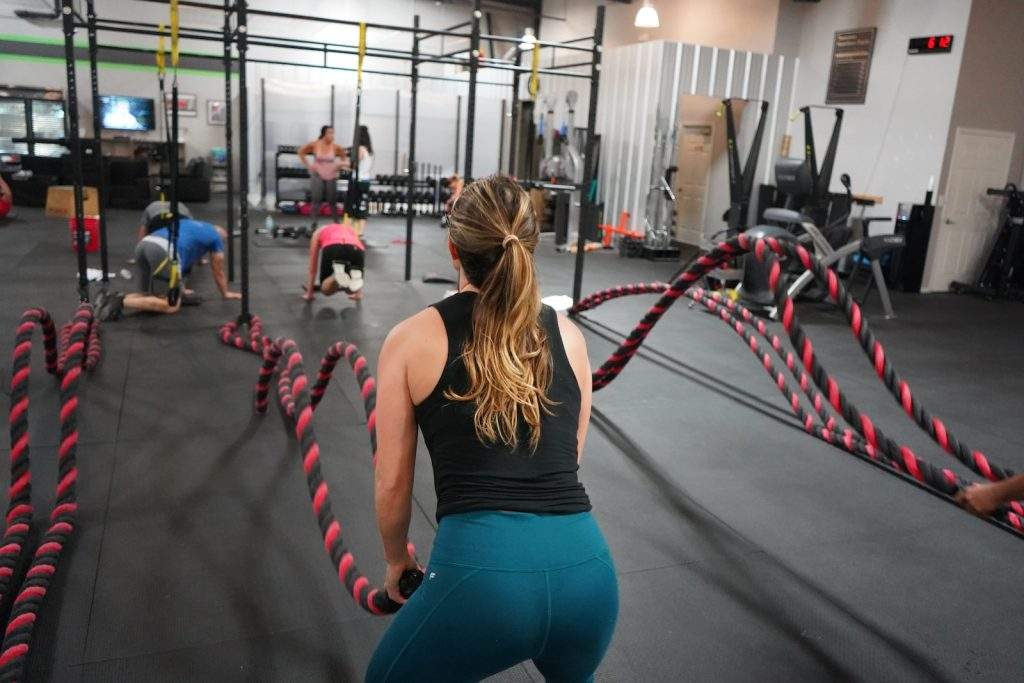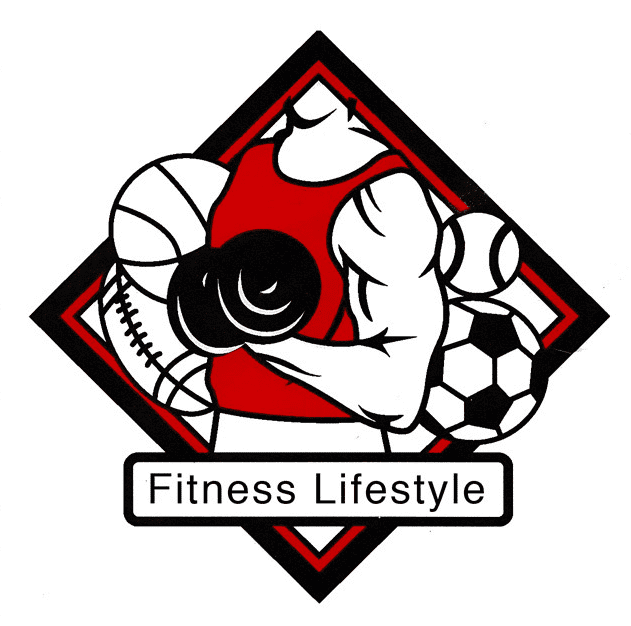Whether you’re just starting your fitness journey or trying to maintain results, even well-intentioned workout routines can get derailed. Here are the top 10 fitness mistakes I see clients repeatedly make and exactly how to avoid them to maximize results, reduce injury risk, and sustain motivation.

Table of Contents
1. Skipping Stretching: Flexibility is Foundational
Of the Top 10 Fitness Mistakes people make, this one is the biggest! Many clients assume stretching is optional, but it’s essential for mobility, muscle recovery, and injury prevention.
Spend 1–2 minutes stretching each major muscle group before and after workouts. Focus on active stretches like leg swings or dynamic arm circles to loosen tight tissue and improve range of motion. Consistent stretching reduces stiffness and supports better performance in every session.
2. Skipping the Warm-Up: Failing to Prepare
Starting a workout cold increases your risk of early fatigue and reduced effectiveness. A proper warm-up for cardio might include 3–5 minutes of light movement followed by gentle mobility drills. If you’re lifting, begin with lighter sets or bodyweight movements.
Warming up properly helps your heart rate adjust, increases blood flow to working muscles, and primes your central nervous system for better coordination and intensity.
3. Omitting the Cool-Down: Ending Abruptly
A rushed exit after an intense workout can leave you dizzy, sore, or hindered in your next session. Instead, wrap up with 5–10 minutes of walking or slow movement, followed by gentle stretching.
This helps lower your heart rate gradually, clear metabolic waste, and ease muscle tension. A proper cool-down also fosters better recovery and energy for your next workout.
4. Lifting Too Much Too Soon: Ego Over Form
Trying to lift heavier weights before you’re physically ready leads to compromised form and heightened injury risk. Aim to increase load gradually, around 5–10% every 6–8 weeks.
Start light, focus on technique, and slowly progress. Always prioritize control over ego: smooth, controlled reps with proper posture will yield better results than swinging heavy dumbbells with poor form.
5. Overtraining After a Break: Going Too Hard, Too Fast
Clients often skip sessions, then overcompensate by going all out in the next workout. This approach leads to burnout, soreness, and potential injury.
The fix? Start moderate, use shorter workouts or reduced loads and ramp up over successive sessions. A gradual buildup prevents overwhelm and sets you up to stay consistent long term.
6. Dehydration: The Hidden Saboteur
Hydration is often underestimated. While the old “8 × 8 oz of water” rule works as a baseline, active individuals need more especially during or after workouts.
Sip water before, during, and after exercise, and pay attention to urine color (it should be pale to clear). Staying hydrated supports energy, endurance, and muscle recovery.
7. Incorrect Exercise Posture: Form First
When fatigue sets in, posture is often the first casualty. That leaning-forward slouch during a set may cost you muscle activation and potentially injure your back.
If you catch yourself leaning, lighten the load. Maintain a neutral spine, pull shoulders back, and engage your core. Control your weight, don’t let it control you.
8. Ignoring Heart Rate Zones: Not Exercising Smart
Without monitoring intensity, you might be working too hard or not hard enough to get results. Use a heart rate monitor or check your pulse 10 minutes into your workout.
Compare your beats per minute to a target zone (typically 60–80% of max heart rate) to ensure you’re maintaining productive effort. Outside that zone, your cardio system either won’t be challenged enough or will fatigue too quickly.
9. Using Momentum to Lift: Fast ≠ Effective
Swinging weights momentum‑style takes the work out of strength training and places stress on joints. Lift with intention, move in a slow, controlled fashion and focus on muscle engagement.
If swinging is creeping in, drop the weight and recommit to form. Moving with control yields better muscle activation, results, and safety.
10. Fueling Poorly During Workouts: Extra Isn’t Always Better
Running around with protein bars, gels, and drinks can feel necessary but it’s often unnecessary, especially for workouts under two hours. Unless you’re exercising intensely for extended sessions (HIIT, endurance training, multiple daily workouts), a balanced meal ahead and water during the session is sufficient.
Extra calories from bars and drinks can derail progress rather than help.
Why Are These the “Top 10 Fitness Mistakes”?
Together, these pitfalls derail workouts, waste effort, or even lead to injury. Although they seem minor, they often increase frustration, stop momentum, and slow progress.
By fixing these mistakes, you set yourself up for safer, more effective, and more consistent progress.
How to Stay Accountable, Avoid the Top 10 Fitness Mistakes and Actually Follow Through
This topic pairs well with our guide on accountability. Consistency isn’t about being the most motivated, it’s about forming habits and having systems around you to stay on track:
- Schedule check-ins (with clients, coach, or partner) to stay committed.
- Track your workouts and progress visually (e.g., in the app dashboard).
- Share your wins, even small ones, to stay motivated.
- Join a coaching program that provides support, feedback, and accountability.
Take Action Today
Feeling stuck or not sure why your efforts aren’t sticking? You’re not alone, and you don’t have to do this alone either.
👉 Start your FREE trial of virtual coaching now to get:
- Personalized workouts via mobile app
- In-app check-ins and habit tracking
- Ongoing coaching feedback
- Total accountability and a plan that flexes with your life
Take this quick quiz to uncover what might be blocking your progress:
👉 What’s Standing in the Way of Your Fitness Results?
Pro Tips to Level Up Your Routine
| Tip | Why It Works |
|---|---|
| Set micro-goals (e.g. just 3 workouts this week) | Tiny wins create momentum and reduce overwhelm |
| Use habit stacking (work out after brushing your teeth) | Triggers make exercise automatic |
| Log your workouts in the app each day | Visual tracking reinforces accountability |
| Review your last workout before starting a new one | Reflection builds consistency and focus |
| Reward yourself for sticking with it | Positive reinforcement keeps motivation high |
Frequently Asked Questions (FAQs)
1. Aside from the Top 10 Fitness Mistakes, what’s the biggest mistake beginners make at the gym?
The most common mistake is doing too much too soon—especially lifting heavy weights without proper form. Start with bodyweight movements, learn proper technique, and gradually increase resistance.
2. How important is warm-up and cool-down in a workout?
Very important. A proper warm-up improves performance and reduces injury risk, while a cool-down helps lower your heart rate gradually and aids in muscle recovery.
3. Do I need to eat protein bars or sports drinks for short workouts?
No. Unless your session exceeds 90 minutes of intense effort, water and a balanced diet are usually sufficient. Extra calories from bars and drinks can derail fat loss goals.
4. How can I tell if I’m using the right weight when lifting?
You should be able to complete your reps with good form, but the last few should feel challenging. If you’re swinging or straining, reduce the weight. If it’s too easy, increase slightly.
5. How much water should I drink around workouts?
According to the Mayo Clinic, drink 7–10 oz of water every 10–20 minutes during exercise, and be sure to hydrate before and after. Thirst is not always a reliable indicator.
External Resources & Further Reading
To support your fitness journey with credible, science-backed insights, check out these resources:
Heart.org – Target Heart Rates
American Council on Exercise (ACE) – Common Workout Mistakes
Mayo Clinic – Water: How much should you drink every day?


), //www.fitnesslifestylellc.com/wp-content/uploads/2024/10/3076514.jpg))

), https://www.fitnesslifestylellc.com/wp-content/uploads/2024/10/3076514.jpg))













